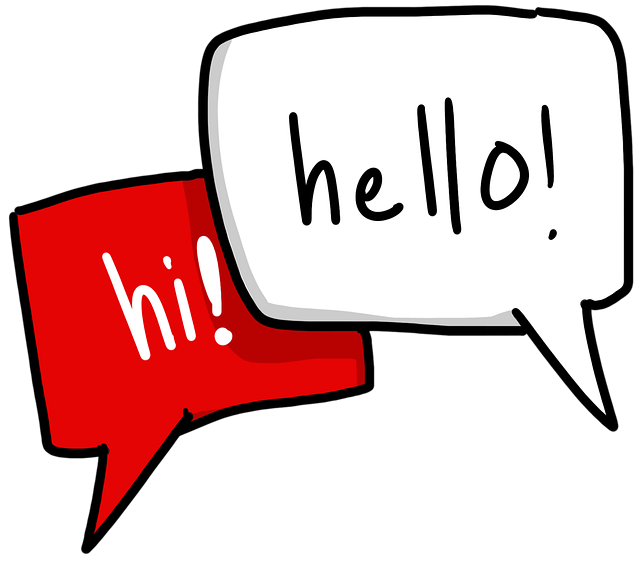Hello! This is Classmate again.
When learning a new language, greetings are often the very first thing to learn. Today, we will explore the way to say ‘hello!(Annyeonghaseyo!)’ in Korean and its cultural meaning in Korean society. Let’s get started!
1. What is “Annyeonghaseyo”?
If you are learning Korean, you will often hear the phrase “Annyeonghaseyo!” a lot. It means “Hello!” in Korean. This is usually the first word you learn when studying Korean. This is also one of the most frequently used phrases in Korean language. This word goes beyond a simple meaning, “Hello!”. It carries warmth, respect, and a touch of Korean culture within it.
You can use “Annyeonghaseyo” when meeting someone for the first time, greeting someone in the morning, or even when buying groceries at the store. It’s the ultimate all-purpose greeting. So if you meet somebody, tell him or her “Annyeonghaseyo!”
2. The Origin of Saying Hello in Korean
“Annyeonghaseyo” originates from the older Korean expression “annyeonghada(someone is in peaceful situation).”
- Annyeong (안녕): A state of peace and well-being.
- Hada (하다): A verb meaning “to do” or “to be.”
In essence, it began as a question asking, “Are you at peace?” Over time, this evolved into a simpler and more casual form of greeting. Therefore, you will start most conversations by saying “Annyeong-haseyo!”.
It has the same meaning as “Hello”, but focuses on the other person’s state of being. While English greetings like “Hello” are more of a conversational signal.
3. A Grammar Breakdown: The Hidden Layers of Korean verb ending
“Annyeonghaseyo” might seem simple, but it showcases the structure and depth of Korean grammar.
A. Annyeong (안녕): (“Annyeong-haseyo”)
“Annyeong” is a noun meaning peace, health, or well-being. Interestingly, it is the informal way of saying “Annyeong-haseyo”. So if you meet someone familiar, you can say “Annyeong” rather than “Annyeong-haseyo”

B. -Hada (하다): (“Annyeong–ha–seyo”)
‘-Hada’ is a verb that turns the noun into an action or state. So if you add ‘-Hada’ afterwards a noun, it works like a verb in English. Here are some exlamples.
- 공부하다(to study / Gongbu-hada)
- 공부(Gongbu): a noun means study
- -하다(-hada): a verb ending transforming a noun into a verb
- 운동하다(to exercise / Woondon--hada)
- 운동(Woondong): a noun means workout or exercise
- -하다(-hada): a verb ending transforming a noun into a verb
C. -Se-yo (-세요): (“Annyeon-ha-seyo”)
‘-Se-yo’ is a verb ending shows respect, making sentences in a polite way. But if you want to use ‘-Se-yo’ with ‘-hada’, you need to eliminate ‘-da‘ from ’-hada’. Let’s see the examples.
- 공부하세요.(Gongbu-ha-seyo.)
- In ‘공부하다(Gongbuhada)’, if you remove ‘-다(-da)‘ and add ‘-세요(-seyo)’. Then it becomes ‘공부하세요(Gongbuhaseyo.)’
- ‘공부하세요(Gongbu–ha–seyo).‘ means ‘Please study.’
- 운동하세요.(Woondong–ha–seyo.)
- In ‘운동하다(Woondonghada)’, if you eliminate ‘-다(-da)‘ and add ‘-세요(-seyo)’. Then it becomes ‘운동하다(Woondonghada)’.
- ’운동하세요.(Woondong–ha–seyo.)’ means ‘Please workout.’
Put together, “Annyeong-haseyo” means “Are you in a state of peace?” but expressed in a polite, compact form.
4. Comparing “Annyeonghaseyo” with “Hello”
A. Simple Comparison
In English, “Hello” is simple and straightforward. It doesn’t change based on who you’re speaking to or the situation. However, “Annyeong-haseyo” reflects Korean’s honorific system, which varies based on social hierarchy and relationships.
- English: “Hello” is used the same way for everyone.
- Korean: Friends get “Annyeong!” while elders or strangers get “Annyeonghaseyo!.
B. Cultural Significance of “Annyeohaseyo.”
In Korea, “Annyeong-haseyo” is more than just a greeting. It’s an expression of respect and care for others. In the past, Korea experienced numerous wars. Many neighboring nations invaded Korea. Life was already tough and challenging. And the constant threat of war made it even harder. Because of this, asking whether everything was fine with the previous night became a form of greetings.
So the ”Annyeong-haseyo” is rooted in this historical backgrounds and reflects the Korean cultural traits of respect and care for others.
5. Wrapping It Up: Mastering “Annyeonghaseyo”
If you’re learning Korean, mastering “Annyeong-haseyo” is essential. It’s a simple yet powerful phrase that can bring you closer to Korean people and culture. Let me briefly summarize what we studied today.
Annyeonghaseyo:
- If you use “Annyeong-haseyo”:
- To someone new: It shows politeness and interest.
- In daily life: It conveys a hope for their peace and well-being.
- Use “Annyeong!” for friends and “Annyeonghaseyo!” for elders or strangers.
- Annyeong : peace or well-being / -Hada: verb ending that turns a noun or an adjective into a verb / -seyo: polite verb ending used in honorific language
“Annyeonghaseyo” is more than just a word. It’s a window into Korean values of respect, warmth, and connection. By understanding and using this phrase, you’re not just learning Korean—you’re experiencing the heart of Korean culture.
That is all for today. See you again in the next post. Let’s keep studying together with Classmates!